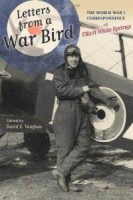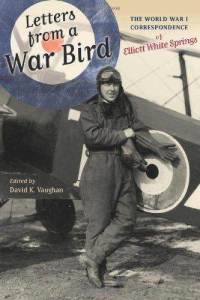 Editor: David K. Vaughan
Editor: David K. Vaughan
Publisher: South Carolina University Press
Book Review by: Sonu Chandiram
This is a fascinating and colorful story of a flamboyant, highly self-confident, bold and courageous World War I flying ace named Elliott White Springs (1896-1959).
Flying was his first passion in which he achieved outstanding success and received high honors. With steely nerves and deadly aim at his enemies, he earned four kills in air combat when he was with the prestigious British 85 Squadron of the Royal Flying Corps, later renamed the Royal Air Force.
There was a pause and he went off duty after he got wounded in a crash landing in June 1918. But after his transfer to the U.S. Army’s 148th Aero Squadron, he went on to garner eight more kills.
He was not only awarded the British Distinguished Flying Cross but also the American Distinguished Service Cross.
The editor of this book David K. Vaughan, himself a pilot and flight instructor, writes in the inside flap of this book, that Springs achieved the distinction of becoming one of the world’s top five flying aces of World War I.
Springs’ second love was writing. And writing about air combat seemed to have come naturally to him, as he authored nine books on the subject. The most notable and popular of them was War Birds: Diary of an Unknown Aviator, published in 1926. He also wrote various articles on his combat missions for a number of newspapers and magazines.
Elliott Springs also slowly but surely, upon urging by his father Leroy Springs, developed a liking for the family business, which became his third love when he was 35, taking ownership of their textile firm named Springs Mills, after his father passed away in 1931.
He ran the business with as much verve and gusto as he flew warplanes, and with his innovative approach, it became one of the most productive textile mills in South Carolina. As a result he became one of the wealthiest and most well-known men in that state.
Almost the entire book of 358 pages is based on correspondence between Elliot and his father Leroy and mother Lena. The author writes that Elliott’s letters are “rife with the wit, bravado and fatalism of a young aviator deeply enthralled with the culture of England and France. His detailed accounts of dogfights bring readers into the action with all the vigor and danger of the era.”
Many of the letters between the son and father are filled with conflict between the two. Being a headstrong young man intent on becoming an aviator, Elliott communicated strongly with his father about his plans. But the father was deeply concerned about the dangers inherent in this occupation and emphasized that point numerous times to try to change his mind.
In the end, upon assurance from Elliott that he had been adequately trained for air combat at several ground and field training schools in the United States and England. The father consented to his son’s wishes.
For those who love to read history, particularly biographical works, there is a lengthy Notes section with 23 pages. David Vaughan has also provided appendices A, B and C respectively, with names of American military persons mentioned in the correspondence; the Grider Diaries; and Spring’s use of materials for this book from his letters home. book.
This is a highly engaging book and I urge readers to acquire and enjoy it.
David K. Vaughan is a pilot and educator who served in the U.S. Force for about two decades, from 1962 to 1982. After acquiring a Ph.D. in English from the University of Washington, he taught at the Air Force Academy, the University of Maine, and the Air Force Institute of Technology, where he is a professor emeritus.
He is the author of Anne Morrow Lindbergh; An American Pilot in the Skies of France: The Diaries and Letters of Lt. Percival T. Gates, 1917-1918 and Runway Visions: An American C-130 Pilot’s Memoir of Combat Airlift Operations in Southeast Asia, 1967-1968.







